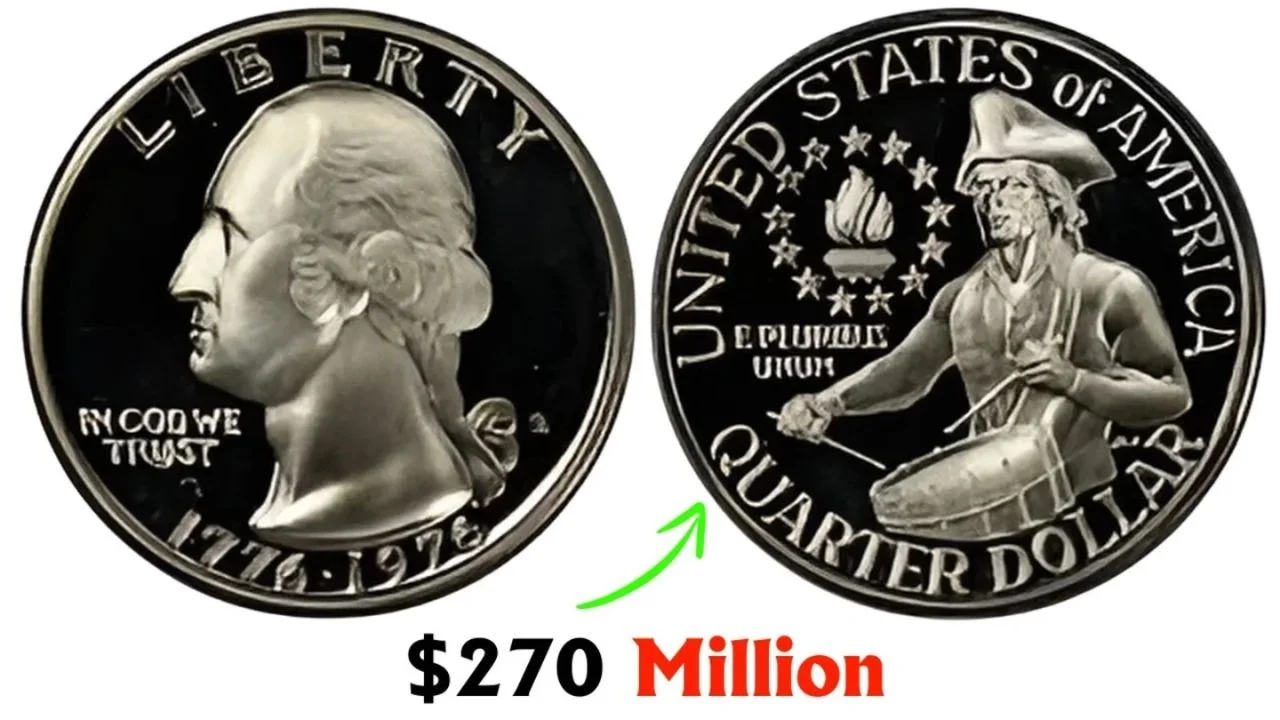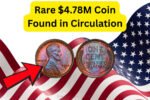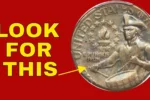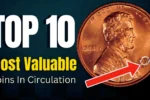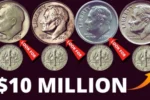Could Your Change Hold $270 Million in Rare Dimes and Quarters?
Have you ever checked the coins lying around in your kitchen drawer or stuffed at the bottom of your car’s cup holder? Most of us overlook spare change, treating it as small and unimportant. But what if we told you that some of those old dimes and quarters could be worth millions of dollars? Yes, your small change could be part of a $270 million treasure still hiding in plain sight.
Many people are now discovering that certain rare coins from the past are worth much more than their face value. Some are so valuable that collectors would pay a fortune to own them. In this article, we’ll explore how your everyday change might contain rare coins and what to look out for.
Why Old Dimes and Quarters Matter
Coins have been part of everyday life for centuries, but not all coins are created equal. Some were minted with rare materials, some have minting mistakes, and others are simply hard to find today. Over time, these factors increase a coin’s value.
Old dimes and quarters, especially those minted before certain years or under special circumstances, are in high demand. Believe it or not, there are dimes and quarters in circulation that could individually be worth thousands — or even millions — of dollars.
Overview Table – Valuable Dimes & Quarters At A Glance
| Coin Type | Year(s) of Interest | Possible Value (Each) | Special Features |
|---|---|---|---|
| Mercury Dime | 1916-D | Up to $100,000 | Tiny “D” mint mark, low mintage |
| Roosevelt Dime | 1949-S or 1955 | $500–$2,000+ | Rare minting years |
| Barber Dime | 1894-S | Up to $2 million | Extremely rare, only 24 minted |
| Washington Quarter | 1932-D or 1932-S | $10,000–$85,000 | First year of issue, rare mints |
| Bicentennial Quarter | 1976 (special error types) | $1,000 to $15,000+ | Errors or unique metal compositions |
| Standing Liberty Qtr | 1916 | Up to $75,000 | Low mintage, hard to find in good shape |
| Silver Quarters | Pre-1965 | $3–$50+ (silver value) | 90% silver content |
| Dimes with errors | Varies | $100–$5,000+ | Off-center strike, double die, misprints |
Design & Features: What to Look For in Rare Coins
When it comes to spotting a valuable coin, you don’t have to be a professional collector. All you need is a little patience and a good eye. Here’s what you should pay attention to:
-
Mint Year: Older coins, especially before 1965, are more likely to be made with silver or have collector value.
-
Mint Mark: Letters like “D”, “S”, or “P” tell you which mint produced the coin. Some mints had very low production in certain years.
-
Errors: Coins with misprints, like double dates, missing details, or off-center designs, can be worth thousands.
-
Condition: Coins in better condition (no scratches, full details visible) are more valuable.
-
Material: Pre-1965 dimes and quarters contain 90% silver, and their value rises with silver prices.
Engine & Story: Why These Coins Became So Rare
A lot of these valuable coins weren’t meant to be rare — they just ended up that way. For example:
-
In 1894, only 24 Barber dimes were minted in San Francisco. Most of them were given as gifts. Only a few are known to still exist.
-
The 1932-D and 1932-S Washington Quarters were the first year of issue, and both had very low mint numbers.
-
Some Roosevelt and Mercury dimes were minted during years when production was limited, either due to war or changes in minting laws.
Minting errors also play a huge role. In the fast-paced minting process, a few mistakes slip through — and collectors love these one-of-a-kind mistakes.
Ride & Handling: Where You Might Find Them
It may sound unlikely, but these valuable coins still turn up in everyday places:
-
Loose change from shops or restaurants
-
Coin jars and piggy banks at home
-
Old coin rolls from the bank
-
Boxes of coins inherited from relatives
-
Yard sales or flea markets where sellers don’t know a coin’s value
Collectors sometimes accidentally spend coins, and others forget they own valuable ones. That’s why many rare dimes and quarters are still in circulation today.
Features & Tech: How to Check Your Coins
You don’t need to invest in expensive equipment. Here are some simple tools to get started:
-
Magnifying glass to spot mint marks and errors
-
Digital scale to check for correct weight (helps identify metal type)
-
Online coin reference guides to compare designs and values
-
Coin apps to scan and get quick value estimates
If you find a coin that looks promising, consider taking it to a certified coin dealer or appraiser for a proper check.
Mileage & Value: Could You Really Hit $270 Million?
Of course, not every coin is worth thousands. But multiply a few rare ones across millions of people and hundreds of collections — and yes, it’s very possible that $270 million worth of rare dimes and quarters are still out there.
Even if your coin isn’t worth a fortune, silver coins and uncommon dates can still bring in extra cash. Some collectors even make it a hobby to search “coin rolls” from the bank and have turned profits this way.
FAQs – Frequently Asked Questions
Q1: Are coins from before 1965 really silver?
Yes, dimes and quarters minted before 1965 are 90% silver and are worth more than their face value.
Q2: What’s the rarest dime I should look for?
The 1894-S Barber Dime is considered the rarest, with only a handful known to exist. It can be worth over $1 million.
Q3: How do I know if my coin has an error?
Look for things like double images, off-center designs, missing elements, or strange textures. You can compare with pictures online or consult a coin expert.
Q4: Can I sell valuable coins online?
Yes, websites like eBay and coin auction sites are popular, but always be cautious and understand the true value before selling.
Q5: Are new coins ever valuable?
Sometimes. Modern coins with rare errors or limited mint runs can still hold value. But older coins have a better chance of being rare and valuable.
